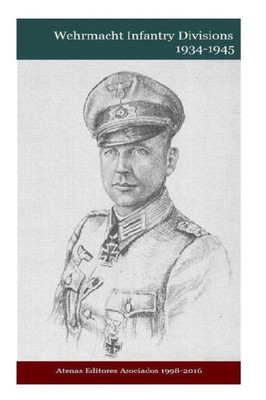

Wehrmacht Infantry Divisions 1934-1945
CreateSpace Independent Publishing Platform
ISBN13:
9781537339818
$17.94
The 1939 German infantry division bears an amazing similarity to the German infantry division of 1918. The infantry battalions had shed a rifle company and the infantry regiments had acquired an infantry gun company. The cavalry squadron was reduced to a platoon. The pioneers sent their mortars to the infantry battalions' heavy companies and acquired a third pioneer company. The artillery was fundamentally unchanged.The divisions still contained a Feldersatz (replacement) battalion, and the signals command had become a full battalion organized with two full companies, one radio and one telephone.The support units remained surprisingly similar as well, though the tail became heavier in terms of transportation columns. Germany began World War II with the infantry divisions it had developed with the lessons ofWorldWar I. These lessons, however, would soon be replaced by new ones, and the process of reorganizing the infantry division to meet new conditions began afresh. After the beginning of World War II the German line infantry divisions underwent two major organizational changes, the Type 44 division and theVolks Grenadier division. There were a number of different types of divisions organized - Jager divisions, mountain divisions, Sperr divisions, garrison divisions and security divisions - plus a wide variety of training, reserve and recruit divisions.These were, however, specialized divisions and not intended to fight in the field. Their organizations, though covered in this and successive volumes, are considered separately since they were not part of the line division. The first major organizational change in the line divisions from the 1939 organization occurred with the introduction of the "Neues Art" or Type 44 division. The principal changes were that in the Type 44 division the number of battalions in the infantry regiments was reduced from three to two and that the reconnaissance battalion was replaced by a fusilier battalion.The second major change was the organization of theVolks Grenadier divisions in 1944. Here the principal change was the name. There were only a few structural changes, but the types of equipment did vary.The artillery regiments added a 75mm field gun battalion, one of the infantry battalions was mounted on bicycles, and the German equivalent of the bazooka, the Panzerfaust or Panzerschreck, was introduced widely into the infantry organization.
- | Author: Gustavo Uruena A, Atenas Editores Asociados
- | Publisher: CreateSpace Independent Publishing Platform
- | Publication Date: Jul 13, 2016
- | Number of Pages: 426 pages
- | Language: English
- | Binding: Paperback
- | ISBN-10: 1537339818
- | ISBN-13: 9781537339818
- Author:
- Gustavo Uruena A, Atenas Editores Asociados
- Publisher:
- CreateSpace Independent Publishing Platform
- Publication Date:
- Jul 13, 2016
- Number of pages:
- 426 pages
- Language:
- English
- Binding:
- Paperback
- ISBN-10:
- 1537339818
- ISBN-13:
- 9781537339818





